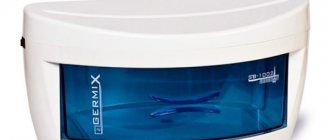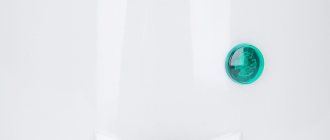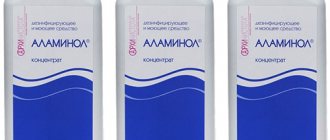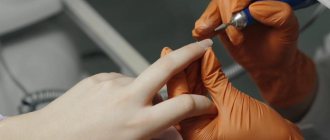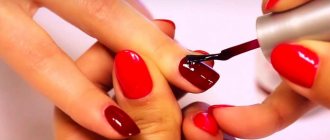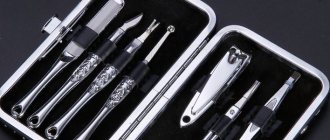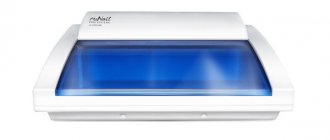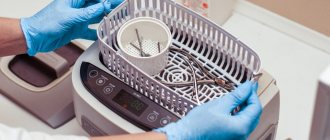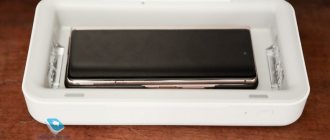Unfortunately, it is still quite common to see the following picture in a beauty salon: the hairdresser, having completed the haircut, shakes the hair off the comb with his hand and lays out the tools on the table, getting ready to serve the next client. Many hairdressers keep combs and razors in their pockets for trimming their temples, removable attachments for hair clippers are in the drawers of their bedside tables, and brushes for shaking hair from the face and neck are on the tables. Of course, such unsanitary conditions are more likely to be possible in some low-budget hairdressers and economy-class beauty salons, but, nevertheless, in higher-level enterprises there are deficiencies in sanitation.
As a result, according to specialists from the Research Institute of Disinfectology, from even high-class beauty salons, a client can bring home herpes, staphylococci and streptococci, warts and even pediculosis (lice), scabies, tuberculosis, hepatitis and HIV infection as a “bonus”.
You don’t need much to get infected; it’s enough to damage the scalp when combing the hair with a sharp comb, cutting the client with a clipper, scratching with a hard brush, or nail scissors. However, technicians can not only infect the client, but also become infected themselves.
In order for clients of beauty salons not only to become beautiful, but also to remain healthy, and for professionals to be guaranteed protected from infections, it is necessary to introduce safe technologies. The health of clients and beauty salon staff depends on how well informed salon employees are about the prevention of infectious diseases, disinfection and sterilization.
Sanitary standards require that each client of a beauty salon use a clean set of linen and, after each service, sterilize instruments that have had direct contact with the client. This includes hairdressing tools, tools for manicure and pedicure specialists, massage equipment, cosmetology tools and devices.
As experts conducting inspections explain, employees of beauty salons often break the rules not because of a reluctance to carry out such events, but simply because of a lack of appropriate knowledge and skills on sterilization issues or simply because of their own... bad manners. As a result, some specialists, even trying to comply with sanitary rules, often make serious mistakes: they use sterile gloves to take non-sterile things or believe that placing an instrument in an ultraviolet irradiator is sterilization (in fact, such preparations are only intended for storing instruments that have already been disinfected and sterilized ).
Purpose and work
Sterilization is called a mandatory step before work. Ignoring this work not only threatens the client’s health, but also negatively affects the reputation of the manicurist or pedicurist.
You may be interested in:Modern burgundy and gold manicure: the best ideas with photos
Trimming manicures and other actions with nails that can lead to microcuts are dangerous due to the risk of infection. Sterilizers for manicure instruments help prevent this. It is used for disinfection.
Many clients come through the manicure and pedicure specialist every day. Of course, no one brings a doctor’s certificate about their health. The risk of contracting various types of AIDS and hepatitis, for example, increases with a cut. Biological remains of a sick person remaining on instruments, penetrating through the cut to healthy people, lead to dangerous illnesses.
You may be interested in: DIY manicure at home: step-by-step instructions with photos
The effectiveness of treatment is determined by compliance with sterilization:
- Removing biological material from instruments. Cleansing is performed with special liquids and wipes. Remains of sebum, skin particles, and blood are washed away.
- Treatment is carried out with a disinfectant. At this stage, it will be possible to eliminate the main fungal infections and viruses. Both universal products and solutions with a narrow focus are used.
- Sterilization is carried out in the apparatus. This is the main step in cleaning instruments. Disinfection may vary depending on the type and time.
- The areas where the master's work will be performed are treated with additional disinfectants.
The operating principle of a sterilizer for manicure instruments is to expose the disinfection object to heat, UV or infrared rays, and ultrasound. This is required to destroy pathogenic microbes and viruses on the surface of the devices. It is because of them that illnesses appear - fungus, herpes, inflammation. The devices operate from a standard network (220 V), they need a regular outlet.
The most versatile and expensive sterilization method
The most universal way to achieve sterility of any material today is low-temperature sterilization: plasma and gas low-temperature sterilizers. In medicine, low-temperature plasma autoclaves are used to sterilize so-called thermolabile materials, that is, objects and substances that are destroyed or lose their properties at autoclaving temperatures or when treated with hot air.
Plasma sterilizers are mainly used to process
- Flexible endoscopy (and semi-flexible endoscopes)
- Rigid optics (rigid endoscopes), especially with video systems
- Ophthalmic equipment
- Components of anesthesia-respiratory circuits, devices and systems (NDA)
- Electrosurgical instrument (ESHF)
- All other types of loads are also acceptable for a plasma sterilizer, but due to the high cost of one sterilization cycle, it is used only in cases where other types of sterilization are not suitable.
The main disadvantage of a plasma sterilizer is its high cost and the need to use special reagent cassettes or other expensive consumables for each cycle. Also, a plasma sterilizer requires constant monitoring of its technical condition and regular maintenance, since this system is much more complex than other sterilization devices.
Therefore, there are not so many low-temperature plasma autoclaves now, and the main method of sterilization is autoclaving in a steam autoclave.
Advantages
You may be interested in: Manicure machine: types, instructions, tips for choosing
Nowadays there are many sterilizers for manicure instruments on sale at different prices. Disinfection methods differ, so the cost and processing time differ. The price is affected by the device’s capacity, case material and brand.
When choosing equipment, you need to pay attention to its characteristics, which include:
- ease of use;
- camera size;
- processing time;
- quality of work;
- cost.
Before working with the device in the salon or at home, you must study the instructions. It is necessary to clarify in advance the rules for disinfecting devices before sterilization in the device. Which manicure tool sterilizer should you choose? When choosing you need:
- Switching on, checking operation.
- Checking the presence of a passport.
- Familiarization with the terms of the guarantee.
Sterilization at the CSO
When equipping CSOs (sterilization departments) in large clinics, as a rule, they purchase all types of sterilizers, since each has its own specifics, scope of application, advantages and disadvantages. Dentistry, surgical centers, general medical practice clinics and other medical institutions have their own central medical centers.
Planning large projects and selecting suitable sterilization equipment includes comprehensive equipment of central sterilization departments (CSD) with equipment such as:
- Autoclaves (steam sterilizers)
- Dry air sterilizers (dry heaters/dry heat ovens, drying ovens)
- Plasma low-temperature sterilizers (low-temperature autoclaves)
- Distillers and water treatment systems
- Cabinets for maintaining instrument sterility
- Various washing-disinfectors and pre-sterilization cleaning systems
- Installations for TLDs and processing of various equipment
Properly equipping the CSC according to the standards of the Ministry of Health and in accordance with modern safety trends is a complex, responsible and very important procedure.
The quality of sterilization, that is, the safety of patients, and the durability of the equipment, the cost of its maintenance, consumables, that is, the efficiency of the equipment, the payback and income of the clinic depend on this.
Ball
This is an effective sterilizer for manicure tools. The ball device allows you to process scissors, tweezers, files and other manicure/pedicure accessories in seconds. Mini balls, similar to sand, are placed in the cup-shaped chamber. Such equipment is also called quartz. The balls heat up to 250 degrees, the device is capable of high-quality processing of various metal products.
These devices are compact and have high sterilization speed. Moreover, they can be used both at home and in the salon. The tool is not completely immersed, but only the working part without traces of moisture on the surface. The entire procedure is completed within 20 seconds. A ball sterilizer for manicure instruments ensures complete sterility of accessories.
The advantages include that there is no risk of damage to the instruments. But the device has several disadvantages:
- Only steel products can be processed, other materials are not suitable.
- After turning on, you need to wait about 30 minutes for the balls to heat up, only then can you begin disinfection.
- The filler should be replaced one year after use.
- Balls dull the sharpness of instruments.
Autoclaves and dry heaters in cosmetology, dentistry, small clinics
When equipping small medical centers, beauty salons and clinics, dentistry, the question often arises: what to choose: an autoclave or a dry heater?
When can you save money and not use autoclaving? And is there anything more versatile than a modern autoclave?
For the simplest materials (usually metal) and simple-shaped instruments, you can use dry-heat sterilizers, but air sterilization has its limitations: cycle time, very high temperatures, etc.
Dry heaters are suitable for many cosmetic and dental instruments, but even here you can’t do without a good autoclave in modern conditions.
Now there is a whole line of cosmetic and dental autoclaves, which mainly differ in their affordable pricing, but at the same time increasingly offer all the modern functions, including pre-vacuum and vacuum drying, allowing them to process a full range of materials suitable for autoclaving.
When choosing an autoclave for any area of use, you should also take into account the class of the autoclave you are purchasing: B, S, N. This determines which instruments and materials can be sterilized in the device. Read more about the classes of autoclaves in our separate material.
When choosing an autoclave (and other types of sterilizers), it is important to remember about its regular maintenance and routine repairs. When operating such equipment, autoclave repair is part of the work process, and timely maintenance significantly extends its service life.
Glasperlen
This is one of the types of ball sterilizers for manicure. It has similar processing conditions. To properly handle the balls, you must read the instructions. Glass beads heat up to 250 degrees, eliminating microorganisms on the surface of instruments. The diameter of the balls is selected to match the size of frequently sterilized devices.
You may be interested in: Lemon-colored manicure. Summer nail design
There is no need to store sterile instruments; they can be sterilized before the client. The device must be used carefully to avoid burns. The duration of sterilization is no more than 30 seconds. Devices with glasperlene are officially approved by Sanpin because they destroy HIV. But the device can also kill hepatitis, since the processing temperature is high.
Glasperlene sterilizer is available for use by all craftsmen. The device has an optimal price-quality ratio. The equipment eliminates infections and viruses. Its disadvantages are the same as those of ball-type devices.
UV sterilizer
The device does not guarantee absolute sterility of objects. It is typically used to maintain sterility after major processing. A UV sterilizer for manicure instruments is often used to treat devices that do not transmit dangerous diseases - makeup brushes, combs.
The device emits rays that hit the object and disinfect it. You can process tools made of different materials, as they do not deteriorate. Avoid getting burned. The processing time is about 40 minutes.
Most of the bacteria die, but many viruses are resistant to UV radiation and remain on manicure devices. Due to their low cost, the devices are in demand, although they are not considered quite effective.
Review of the best sterilizers for manicure instruments
For your convenience, we have prepared a short review of the best sterilizers with user reviews.
Glasperlene sterilizer, 100 W, white
A miniature and lightweight sterilizer for quick and high-quality cleaning of manicure instruments. Suitable for both home use and for sterilizing instruments in the salon.
pros
- small size and light weight
- fast sterilization time - only 30 seconds
- maximum temperature inside the flask - 250C
- low cost
Minuses
Judging by the reviews, the temperature inside the flask does not always reach the promised 250C and is at the level of 200C, but even at this temperature it is possible to ensure perfect sterilization of the instrument. In addition, with prolonged sterilization, the balls can dull the instrument blades, after which they will need sharpening.
Reviews
Marina: “An excellent sterilizer with quartz balls. Small in size, very light, has indicators. I’ve been using it for 3 months now and everything works perfectly.”
Faceshowes CH-360T, 300 W
Stylish dry heat cabinet for sterilization. Equipped with a convenient control panel - using the regulators, you can independently set the temperature and time for sterilization of the instrument.
pros
- high-quality sterilization of instruments
- convenient control
- automatic timer that will notify you when sterilization is complete
- blades don't dull
Minuses
- heavy weight
- high price
- long tool processing time
Despite all the disadvantages, dry heat sterilizers are the most popular. They do not dull the blades and sterilize efficiently.
Reviews
Polina: “Even during the manicure course, I decided that I would buy dry heat, because I think that I need to work only with high-quality equipment. I put the tools in the dry roaster in craft bags, nothing burns, it cooks perfectly. I am satisfied with the purchase!”
Inga: “I was very pleased with the work of this dry heater. Compared to other dry heaters, this one has a pretty reasonable price. The size is suitable for placing a dry roaster in the room, and it looks attractive. There is a slight smell during operation, but it disappears quickly once you open the window.”
Faceshowes KH-360B, 500 W, white
This dryer is equipped with a convenient control panel with the ability to control the temperature and processing time of the instruments. In addition, there is an electronic sensor on the body, by which you can always find out how much longer the tool will be processed.
pros
- high power
- convenient control panel
- electronic sensor
Minuses
- high price
- long tool processing time
- no end signal
Reviews
Alya: “I wanted to buy a glasperlene sterilizer, but in the end I decided to save up and buy dry heat. I'm happy with the purchase. In this dryer you can set the temperature and operating time, I always set the temperature to the maximum (to be sure), and the operating time is 60-70 minutes. The display shows the heating temperature; it heats up to 200C in about 5 minutes. I recommend purchasing."
Faceshowes KH-360C, 300 W, white
Another excellent model of a dry heater with a display on which you can observe the change in temperature inside the bowl in real time. As with all previous dry heaters, this one allows you to manually set the temperature and processing time for the tools.
pros
- attractive appearance
- convenient control panel and temperature sensor
- built-in sleep timer
Minuses
- long tool processing time
- high price
Reviews
Olga: “Excellent dry roast, fry powerfully, operation is simple. And it looks attractive - it stands on the window behind my workplace and is not visually annoying at all. I recommend it to everyone, both beginners in manicure and those who have been in this business for a long time.”
VGT 6250, 65 W, ultrasonic
Stylish and effective - this sterilizer works using sound waves and efficiently cleans even the most invisible dirt and hard-to-reach areas of the instrument.
pros
- attractive appearance
- There is a liquid heating function and an overheating protection function
- long service life
Minuses
Not detected
Reviews
Svetlana: “I was looking for a spacious ultrasonic bath. This one has a very large volume - 2.5 liters. I use it to clean spoons and it does a great job. In general, to sum it up, I want to say that I am very pleased with the sterilizer, I recommend it to everyone to purchase!”
KH-MT508A,13W,UV
Ultraviolet sterilizer for processing medical, hairdressing and manicure instruments. The processing power depends on the power of the light bulb used in the sterilizer.
Using ultraviolet rays, you can process tools made of any materials: metal, plastic, wood, glass. The sterilizer is very spacious - the bowl volume is 6.5 liters!
Pros of a sterilizer
- attractive appearance
- convenient control panel
- large volume
- there is a timer
Minuses
Not detected
Reviews
Marina: “A good sterilizer. I use it to store tools after dry heat. Very convenient if you don't use craft bags. The bowl inside is very large, it can fit several manicure sets at once. I recommend!"
Ultrasonic
It is the highest quality device for eliminating bacteria and viruses of various types. To work with an ultrasonic sterilizer for manicure instruments, you need water. No solutions are used. With the help of ultrasonic vibrations, the liquid in the tray spreads through the instruments in the form of bubbles, which is why the objects are “massaged”, plaque and pathogenic microbes are removed from them.
No inconveniences were identified when using the device. Processing takes up to 10 minutes. Thanks to it, all contaminants and pathogenic microorganisms are completely eliminated. Tools can be stored inside the device. The disadvantage is the long processing time.
Sukhozhar
A dry-heat oven is similar to a stove in its operating principle: dry air is heated to 250 degrees, so non-metallic objects cannot be sterilized in it. The disinfecting effect is ensured by heat treatment of devices. High-quality sterilization takes about an hour.
Devices are often equipped with a cooling system. It is needed in order to work immediately after disinfection. The price of a dry heater is quite high; it is not considered a profitable solution for craftsmen who have few clients. Even a small dry frying device requires careful handling to protect against burns. Before work, you must familiarize yourself with the safety precautions in the instructions.
Permits for sterilizer
In beauty salons, during inspection by regulatory organizations, you will be asked to provide the following documents for the sterilizer:
- Registration certificate.
- Declaration (Certificate) of conformity.
- Instructions in Russian.
- Warranty and post-warranty service agreement.
- Contract of sale.
Sterilizers have the functionality of a medical device, so appropriate requirements must be applied to them, and the main permitting document for a sterilizer is the Registration Certificate for a medical device. Before purchasing a sterilizer, be sure to check its availability in the register of medical devices. This can be done on the website of the Federal Service for Surveillance in Healthcare:
State Register of Medical Devices
The presence of a sterilizer in this register guarantees that it has passed all the necessary tests and has a registration certificate.
UV cameras must also have the listed documents.
The registration certificate for a medical device is the main document that confirms the effectiveness and safety of the sterilizer.
Autoclave
In a high-pressure device, the temperature increases to 134 degrees, which is why microorganisms die. In an autoclave, sterilization of manicure instruments requires careful placement of devices in one row, but in a dry heater they are also placed in double portions. The quality of processing does not depend on this. Autoclave treatment for manicure tools lasts up to 20 minutes.
For home processing, if a special device is not available, the steam method and oven sterilization are used. But these measures do not guarantee proper care of the devices used.
Which device works best?
There are several nuances that must be considered before using the device.
- Before sterilization, devices are cleaned using disinfectant liquids. Then the procedure will be performed as needed.
- The device is cleaned periodically, treating the outside with mild cleaning liquids (soap solution, alcohol liquid), and only when turned off. There is no need to clean the inside.
- The housing must not be left wet after cleaning. It is advisable to wipe it with a soft material that does not crumble.
- All work must be carried out according to the instructions in order to complete everything efficiently and not harm yourself.
You should not experiment with the device - pour unknown liquids into it, use glass beads after the service life has expired.
Whatever the device, its main task is to ensure the sterility of the instruments. Popular brands, well-known in the world of the nail industry, produce drying lamps, gel polishes, and also produce sterilizers. An overview of the most popular ones is presented below.
Which instrument sterilization device should you choose?
Comparing an ultraviolet sterilizer with a dry heater, one cannot say that any product is bad or does not perform its functions. Both types are quite effective.
In fact, UV treatment does not kill all types of microbes. The device will be an excellent addition to the dry-frying oven; it can extend the period of sterility by several days.
The most optimal solution would be a combination of both an oven and a UV sterilizer. You can find and select a wide range of sterilization devices in the Million Nails online store. Place an order and take full advantage of modern features!
News MirTesen
NAIL-EON Ultrasonic Cleaner
The ultrasonic device provides maximum sterilization results for any device. They must be properly cleaned before being sent to an ultrasound device, and complete disinfection is ensured by a sterilizer. To do this, you just need to pour water into the device.
Safety must be ensured in all beauty salons. You should not perform a manicure unless such treatment has been carried out first. If manicure is performed at home, a sterilizer is also required. Only then will nail treatment be of high quality and safe.
Sterilization quality control
In beauty salons, to monitor compliance with the parameters of instrument sterilization regimes, chemical indicators (test strips) of classes 4 and 5 are used (according to GOST ISO 11140-2011).
Class 4 indicators are multivariable indicators that change their color when exposed to several sterilization parameters (temperature, holding time, etc.). Each sterilization mode has its own class 4 indicator.
Class 5 indicators are integrating indicators that respond to all critical parameters of the sterilization method: temperature, holding time, the presence of saturated water vapor (for autoclaves), etc. Class 5 indicators can be used in any sterilization modes. According to its characteristics, it is close to biological indicators and its operation indicates the destruction of highly resistive (the hardiest spore) microorganisms.
If instruments are sterilized unpackaged, then class 4 or 5 indicators are placed in the coldest points of the sterilizer. For example, for dry air and steam sterilizers, the “cold” points are considered to be the center and corners of the chamber (on each shelf of the chamber where the instrument is located). If a product that is difficult to sterilize is being sterilized (for example, products with cavities into which it is difficult for the sterilizing agent to penetrate), then indicators are also placed inside these products.
If instruments are sterilized in packaged form, then class 4 or 5 indicators should also be placed in the coldest points to monitor compliance with all critical sterilization parameters inside the sterilizer chamber; such indicators are called “external”. But besides this, class 4 or 5 indicators are placed inside each package to monitor compliance with all critical sterilization parameters inside the package itself; such indicators are called “internal”.
If, after sterilization, the “external” indicators of classes 4 or 5 change their color to the reference value, this means that the critical parameters of the sterilization modes have been met inside the sterilizer chamber and the instruments can be used, otherwise all instruments must be re-sterilized. If, upon opening the package, the “internal” indicator does not work, then the instruments contained in this package are considered not sterile and the instruments from this package must be re-sterilized. This can happen if, for example, the tool loading standards are not met, i.e. Too many tools were put in this package.
If you work in a beauty salon, then you need to keep a log of monitoring the operation of the sterilizer. The presence of this journal and its completion are checked by regulatory organizations. After each sterilization, the corresponding lines of the log are filled in and “external” indicators that were sterilized along with the instruments are pasted in to confirm monitoring of compliance with the parameters of the sterilizer operating modes.
